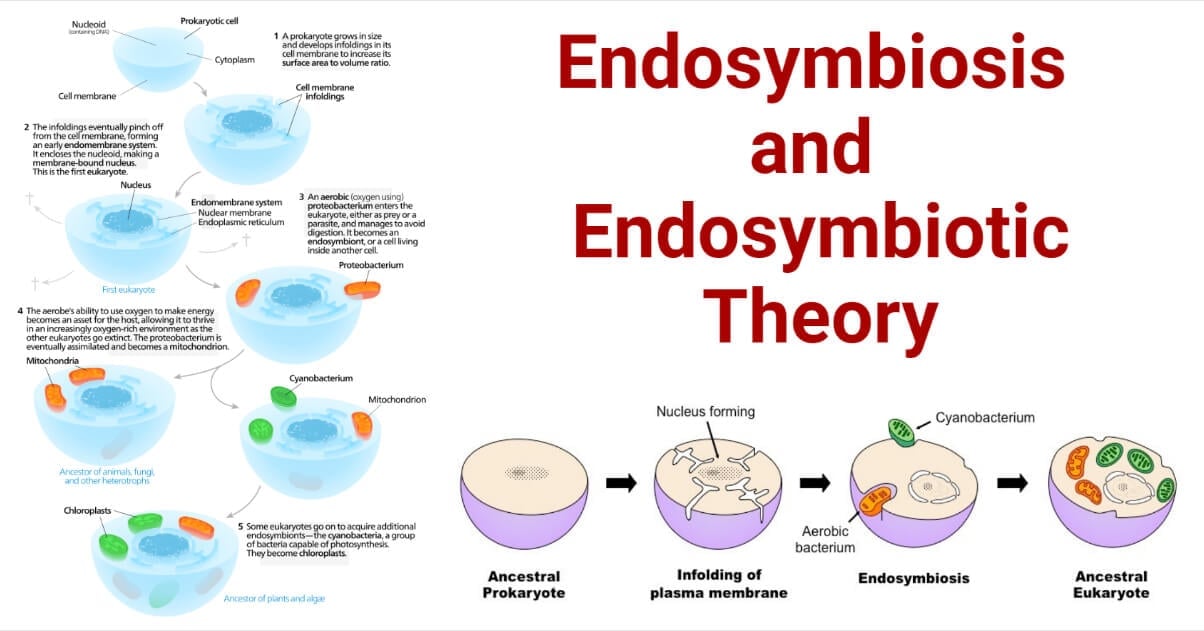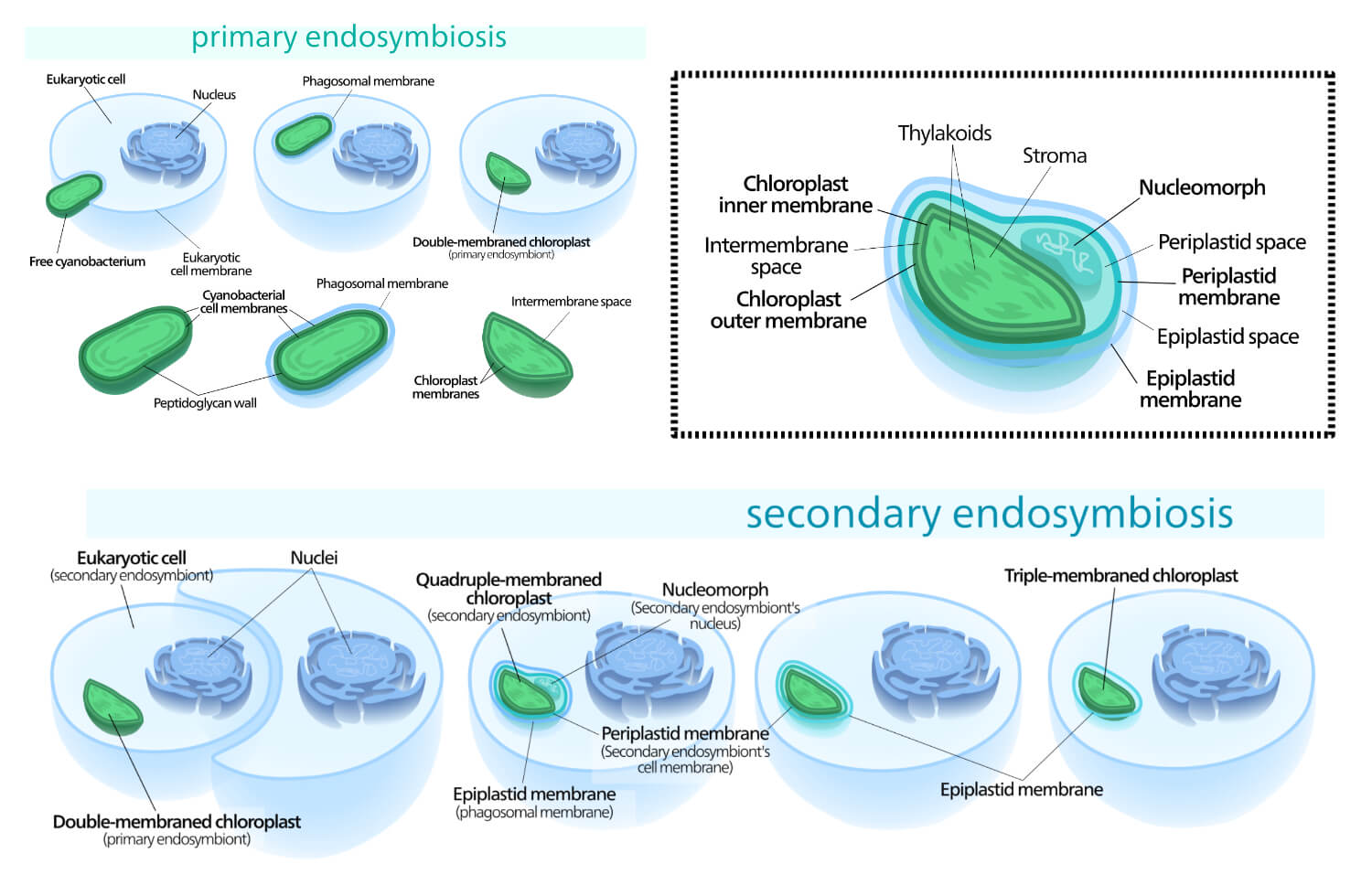Endosymbiosis is the association in which one cell resides inside the other cell, and they have a mutual interaction of benefitting and getting benefitted.
Symbiosis is the relationship between organisms where both of them depend on each other without harming and utilizing the sources they have to survive. The word endo indicates that this relationship occurs inside the organism where one of them lives within the body of the other.
Symbiosis is of two types based on the location of the organism:
- Endosymbiosis
- Ectosymbiosis
The organisms that show endosymbiosis are called endosymbionts. The other cell or organisms in which they reside are called hosts.
Interesting Science Videos
Some Examples of Endosymbionts
The endosymbiotic relationship exists in many species of organisms, such as plants, bacteria, protists, algae, insects, and vertebrates. Some of them are mentioned below:
- Rhizobium is a nitrogen-fixing bacteria that reside in the root nodules of leguminous plants. It gets benefits by extracting nutrients from the cell and benefits the plants by providing them with nitrogenous compounds.
- Acyrthosiphon pisum, an aphid type of insect, and its endosymbiont are bacteria, i.e., Buchnera spp.
- Symbiodinium (a dinoflagellate) resides in mollusks and corals. They help in the coral reef formation as they aid in receiving and storing the sunlight along with some nutrients providing the required energy for the deposition of the carbonates.
- Diatoms (such as Hemialus) in the oceans and seas require nitrogen which is fixed by the endosymbiotic bacterium (such as Richelia) residing in it.
- Algae of Oophila spp have an endosymbiotic relationship with the salamander of Ambystoma spp.

Endosymbiotic Theory
It is the explanation of how eukaryotic cells evolved from prokaryotic cells. It also explains how the eukaryotic cells acquired some organelles, which were prokaryotes, specifically the mitochondrion and chloroplasts. This theory was first presented by a botanist named Konstantin Mereschkowski in the year 1905 to 1910.
Endosymbiotic Theory Steps
- To begin with, the cell initially had the presence of rudimentary endoplasmic reticulum and a rudimentary nuclear envelope formed by the infolding of the plasma membrane.
- Then one of these early cells engulfed aerobic bacteria. Aerobic bacteria can utilize oxygen and provide the cell with energy in the form of ATP. The process involved in engulfing those bacteria is called endophagocytosis, in which the plasma membrane folds inside to form vesicles and transport the bacteria inside the cell.
- After generations and generations (maybe millions) of the engulfment of the bacteria, its descendants gradually lost their ability to live independently, and they became the internal symbionts of the large host cell. This led to the formation of an organelle that we call mitochondrion.
- Again one of the host cells engulfed another bacterial cell which was a photosynthetic cyanobacterium. After many generations of bacteria, it gradually became dependent on the host cell, and another cell organelle formed, which we call the chloroplast.
As there were two symbiotic events, one followed by the other, therefore this phenomenon is also called serial endosymbiosis.
How the Scientists found the order of the formation of mitochondrion and chloroplast?
In the endosymbiotic theory, it is stated that the mitochondrion formation occurred initially, and later on the chloroplast. This order was determined by using the knowledge of phylogeny or evolutionary history.
As the bacteria are prokaryotes, they do not have the presence of mitochondria, and chloroplast. Almost all the eukaryotes after that such as protozoa, animals, fungi, plants, and algae have mitochondria suggesting that aerobic bacterium was engulfed very early so mitochondrion was considered to evolve at first in the eukaryotic cells.
Chloroplasts are present in only a few types of eukaryotic cells, mainly algae, and plants. This suggests that the cyanobacterium was engulfed by a most recent ancestor of the plants and algae after the ancestor split off in other directions from the lineages which led to protozoa, animals, and fungi. This suggests that the chloroplast was formed later.

Evidence that Shows the Existence of Endosymbiosis in Eukaryotic Cells
The evolution of cells to eukaryotic is believed due to the involvement of endosymbiosis of organelles such as plastids, and mitochondria (that were initially prokaryotes) which later on formed the complex eukaryotic cells.
- The cell organelles such as chloroplast, and mitochondria can divide binary fission which might have been separate at first and later symbiotically entered the eukaryotic cell.
- The size of bacterial and those cell organelles is similar.
- The presence of an extra outer membrane may be due to the vesicular transport of these cells into the eukaryotic cell.
- Along with the 80s ribosomes, there is also the presence of the 70s ribosomes which are common in prokaryotes.
- As in the prokaryotes, mitochondria, and chloroplast also have circular and naked DNA.
- The cell organelles also show susceptibility toward some antibiotics such as Chloramphenicol which is the characteristic of bacterial cells.
Endosymbiosis Significances
- The endosymbiont gets a favorable environment for its survival.
- The hosts consume different nutrients which are required by the endosymbiont for their growth, multiplication, and survival.
- The hosts also get some benefits such as some nutrients and anti-pathogenic chemicals from the endosymbiont. For eg. In the case of E. coli, it releases chemicals called colicin which can harm other pathogens entering the human body.
- Endosymbiosis process is also beneficial in the evolution of cells, where one cell moved inside the other and gradually developed into a complex cellular structure. Different forms of life or organisms that currently exist are because of endosymbiosis.
Some Related Terms
Ectosymbiosis: It is the phenomenon in which one organism on the surface or skin or outer body part of another organism and they both have a mutually beneficial relationship. The organisms that show ectosymbiosis are called ectosymbionts.
Protocoopeartion: It is similar to symbiosis but not obligatory.
Commensalism: It is a type of relationship in which one of the members is benefitted while the other is neither benefitted nor harmed. The organisms that show commensalism are called commensals.
Parasitism: It is a type of relationship in which one organism is benefitted while another is harmed due to the presence of that member called a parasite.
References
- Nowack, Eva C M, and Michael Melkonian. “Endosymbiotic associations within protists.” Philosophical Transactions of the Royal Society of London. Series B, Biological sciences vol. 365,1541 (2010): 699-712.
- Moran N.A., and Chong R.A. (2018) Endosymbiosis. Evolutionary Biology. Doi: 10.1093/OBO/9780199941728-0114
- Martin W.F., Garg S., and Zimorski V. (2015) Endosymbiotic Theories of Eukaryote Origin. Phil. Trans. R. Soc. B 370: 20140330
- Lynn M. (2011), Symbiogenesis. A New Principle of Evolution Rediscovery. Palaentological Journal. 44 (12): 1525-1539.

It’s good